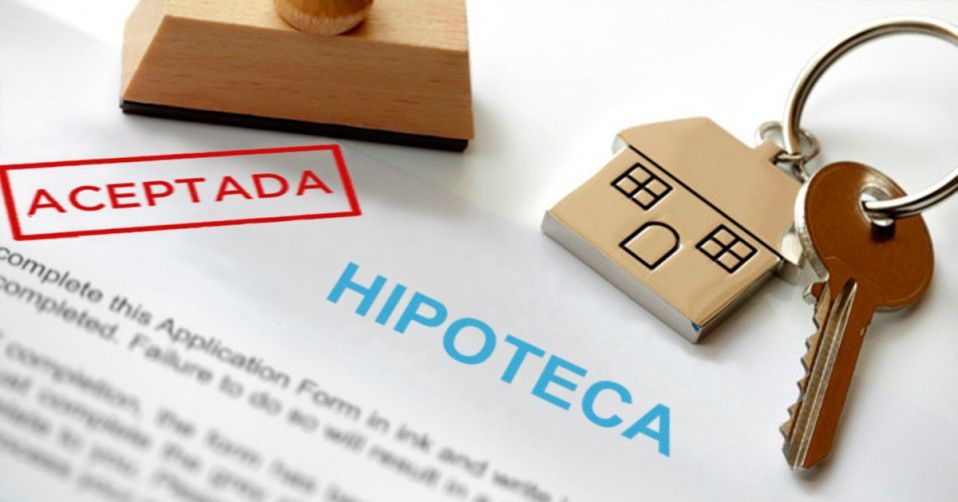How to optimize your Spanish mortgage fees
On June 17, 2019, Spain’s new mortgage laws came into effect. These laws stem from an EU directive to align the mortgage laws of member states and discourage unfair lending practices. Two years in the waiting, and under pressure from the EU to implement them promptly or incur daily fines, they are now in force. Read this article to learn the new fees associated with a Spanish mortgage and how to optimize them.
For how much can I get a Spanish mortgage?
Spanish lenders will grant mortgages to non-Spanish nationals. However, most will not lend more than 50% of the property purchase price.
We spoke with a leading mortgage originator from Banco Sabadell. She pointed out that the size of mortgage granted is a key variable in determining the terms of a mortgage, as it is a way for banks to mitigate their risk. For example, you may get lower fees than you anticipated, but only 40% of your purchase financed.
She also pointed out that each case is different, and depends upon a variety of factors. These include:
- Current EURIBOR rate. Note that EURIBOR is adjusted every 15 days.
- Term of the mortgage.
- Amount of mortgage.
- Calculated ability for client to repay the loan. This is based upon the client’s work contract, assets and credit rating in Spain.
Moving2Madrid has excellent relationships with key Madrid lenders. If you work with us, we are often able to get 60% financing for our clients. We have seen offers as high as 70% of the purchase price, but the other terms were less favorable.
Key Takeaway: The amount of the mortgage granted is often a key bargaining point. Moving2Madrid has a tight network of lenders that we work with to help our clients secure optimal financing. To learn more, book a free consultation today!

Hipoteca is Spanish for mortgage. Moving2Madrid has an excellent network of lenders- we are usually able to leverage this to achieve the best possible mortgage terms for our clients.
How to apply for a Spanish mortgage
You need to go through the lending department of a large bank. To get the ball rolling, you will need to provide the following documentation:
- A copy of your purchase contract on the property
- Copy of any work contract you have
- Past tax returns in your country of origin
- List of all assets you own- bank accounts, stock holdings, cars, etc. (Patrimonio)
- A separate list of all real estate holdings you have (Bienes).
Please read this to learn more about the paperwork required to get a Spanish mortgage
What happens after you apply for a Spanish mortgage
If your application is accepted you will receive two or three documents:
- A FEIN (Ficha Europea de Informacion Normalizada). In English, it is called a European Standardized Information Sheet. This document is a personalized description of the terms and conditions of the mortgage on offer. It enables you to clearly understand your offer. Since it is standardized, you can obtain FEINs from multiple lenders and clearly compare them.
- A FAE (Ficha de Advertencias Estandarizadas). This is a very general document outlining the general conditions the Bank offers on mortgages.
- If you mortgage is a floating rate mortgage, you will be given a document outlining the potential effect of interest rate fluctuations on your mortgage payments.
What’s different after Spain’s new mortgage laws?
The FEIN and FAE replace the current document in use, the FIPER. The FEIN contains much more detailed information than the FIPER about the product on offer and is more personalized. The document related to floating rate mortgages is new.
Fees associated with a Spanish mortgage
Land Registry fees
Keep in mind that are extra steps, with associated fees, for those not used to buying a home in the Mediterranean. This is because all properties must be registered with the Land Registry and go through a notary. Furthermore, all changes to the property must be entered into the Land Registry. This includes changing the number of rooms or bathrooms, changes in ownership and any mortgages issued against the property.
Valuation fee
Before entering into a Spanish mortgage agreement, the property must be valued by a third party. Borrowers must pay this valuation fee.
This used to be a side business for lenders, as they would often take a cut of the valuation fee. Now there is a law in place that requires lenders to accept all third party valuations, as long as the valuation company is registered with The Bank of Spain. Following the introduction of this law, most banks offer very fair rates for this service. Going to the trouble of arranging your own valuation is typically not worth the effort.
Valuation fees are usually around 0.1% of the value of the property. To be safe the bank will typically charge you a marked up fee for this upfront, then return any excess.
Notary and land registration fees
There is a tax assessed on all mortgages called the AJD (Actos Juridicos Documentados). Its calculation is a little tricky. The total amount can be up to 2.5% of the property value.
In addition to the AJD, the notary and gestor managing the transaction must also be paid. An gestor is essentially a person that helps parties navigate the Spanish bureaucracy, and is well worth the minimum sums they charge.
In total, the notary and gestor fees amount to about 10% of the property purchase price. The lender is responsible for paying all of these fees.
What’s different after Spain’s new mortgage laws?
In the past, the borrower paid all of the fees related to the Land Registry. After June 17, 2019, the lender is responsible for all of the above taxes and fees except the property valuation fee.

There are a number of large Spanish lenders. Our favorites and Moving2Madrid are Sabadell, Caixa and Santander.
Bank fees
Arrangement, or opening fee
This is charged on every Spanish mortgage. It is not payable until the mortgage is granted and you start to draw on the funds. If you are granted a mortgage, but don’t avail yourself of it, you will not be charged this fee.
Typically, arrangement fees are 1.5% of the gross loan amount. This fee is paid by the borrower.
Research, or study fee
This is only charged in special cases, when the bank has to put extra time into researching the buyer’s creditworthiness. It is most often seen when the buyer is from a country they are not used to working with and presents a complicated country case study (Lebanon is a recent example of one of our clients).
Study fees typically range from 500-1000€. This fee is paid by the bank.
Additional insurance
Most Spanish lenders require that you have both life insurance (in case you die this provides funds for the loan to be repaid) and property insurance. They are legally allowed to do this. However, you are allowed to contract insurance from a third party. Typically, home insurance amounts to about 0.15% of the property value and is best paid annually.
What’s different after Spain’s new mortgage laws?
In the past, Spanish banks often strong armed borrowers into buying their insurance products by raising the mortgage rate if borrowers didn’t use their home and life insurance products. The new laws do not allow banks to do this, and legally obliges them to accept insurance from third party carriers. Banks are still allowed to cross-sell insurance products to mortgage clients. However, they must offer two separate offers to facilitate a comparison: one with attached products that create a discount in the interest rate and one without attached products.
Before June 17, 2019, the borrower had to pay all of the bank fees. Now, they only have to pay the origination fee.
Takeaways- how to optimize your mortgage fees
As mentioned, mortgage fees vary depending upon the prevailing interest rates and the client’s creditworthiness. To minimize these fees, we recommend:
- Have all your paperwork in order when you apply for a mortgage.
- Be reasonable when asking for a mortgage. Don’t request more than 70% as you won’t get it.
- Have good quality, external life insurance in place.
- Shop around for property insurance. This way, you can compare the bank’s offer with linked products and see if the lower interest rate warrants using their insurance products.
- Be wary of floating rate mortgages. Make sure you examine the numbers in different interest rate scenarios carefully so you know how future interest rate fluctuations will affect your monthly payments.
- Get a second or third opinion. We recommend applying for a mortgage at two banks. This will ensure you get the most competitive deal in terms of both maximum mortgage granted and minimal fees charged. Our favorite lenders are Sabadell, Caixa and Santander.
- Work with a mortgage broker. Moving2Madrid has excellent relationships with Spanish mortgage brokers. Thus we are usually able to help our clients achieve the largest possibly mortgage with the minimum possible fees.
Overwhelmed? Don’t be. We here at Moving2Madrid have helped hundreds of clients secure Spanish mortgages. Contact us today to learn how we can help you find your dream property and get the optimal deal on your Spanish mortgage.
Posted on 28 June, 2019 by Admin in Mortgage - Buy, New? Start Here






[…] With interest rates in negative territory, and new Spanish mortgage laws favorable to consumers, now is an excellent time to get a Spanish mortgage. Arrange a FREE CONSULTATION TODAY to learn how to minimize your Spanish mortgage fees […]
[…] After you get your visa, take out a mortgage to purchase another property in the 380k€-500k€ range. As a Spanish resident, you can get a visa for up to 90% of the property value. Rent this out at a 5.5% net return. Read this to learn how to optimize your Spanish mortgage fees. […]
[…] To learn more specifics about Spanish mortgage fees, and to learn how to optimize them, read “How to optimize your Spanish mortgage fees.” […]